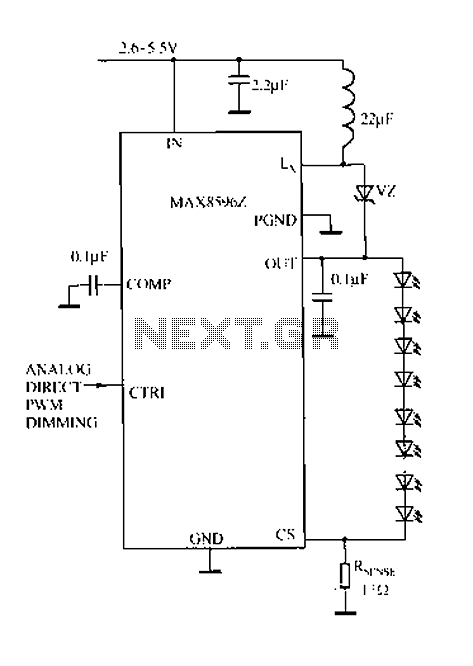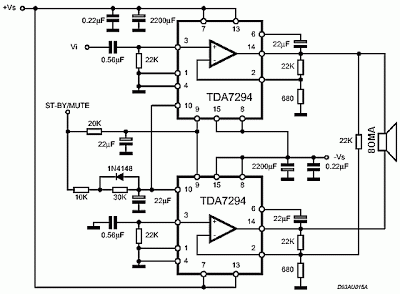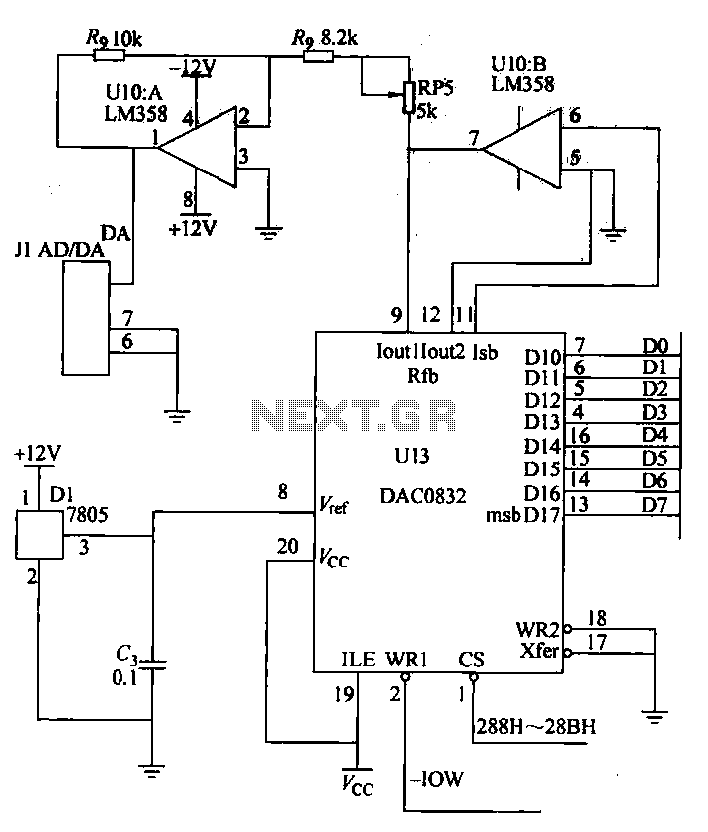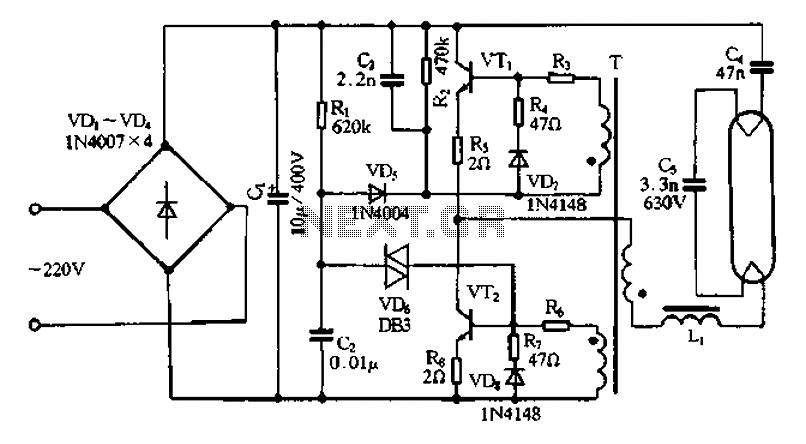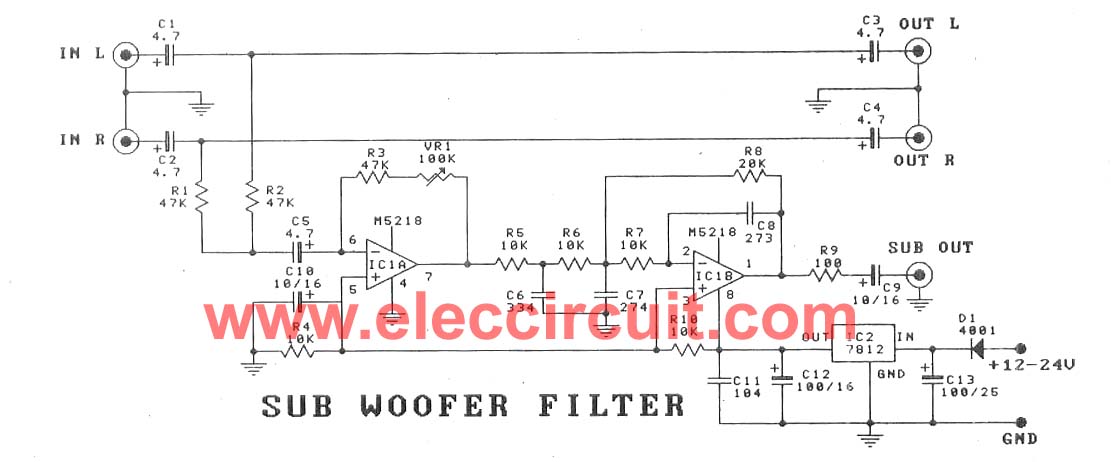
headphone circuit
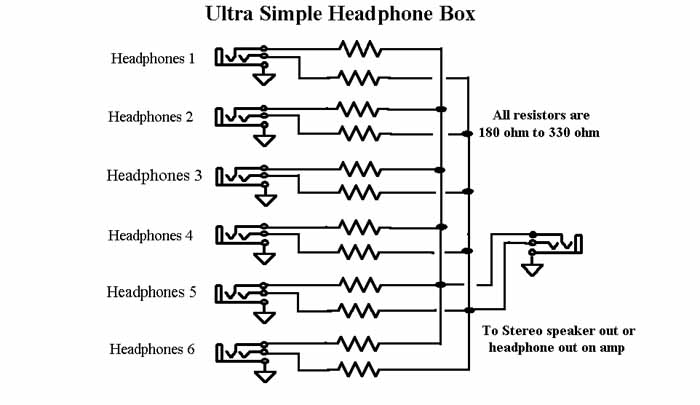
This is a simple passive headphone distribution box that functions effectively. It has been utilized in various recording studios and constructed for multiple users. The absence of active components ensures minimal failure risk and a quick assembly process. The box is designed for situations where multiple individuals need to listen simultaneously, such as recording backup vocals. Due to the lack of volume control potentiometers, individual headphone volumes cannot be adjusted, so it is advisable to use headphones with similar impedance to ensure consistent sound levels. The headphone box relies on the power output from an amplifier or the headphone output from a mixer. Each headphone channel includes a series resistor that acts as a buffer, preventing interaction between the loads of different headphones, similar to the operation of audio mixers. Resistor values may vary based on the source of the audio signal; typically, 180-ohm resistors are used when connecting to a mixer’s headphone out, while 280 to 330-ohm resistors are recommended for speaker outputs from solid-state power amplifiers. Volume control is managed through the amplifier or mixer output levels. The project can be housed in a plastic box, which does not require special metal shielding. The connection to the amplifier can be facilitated through an "A/B" switch to toggle between speakers and the headphone box. If such a switch is not available, one may need to create a DPDT (double pole, double throw) switch. All ground wires should be interconnected. The headphone box is designed to accommodate multiple pairs of headphones, although adding more will reduce overall volume. This setup can also be adapted for scenarios like small group translations or late-night TV viewing without disturbing others.
The passive headphone distribution box serves as an efficient solution for audio monitoring in various settings, particularly in recording environments where multiple users require simultaneous access to the audio feed. The circuit operates on a straightforward principle, where each headphone output is buffered by a resistor, ensuring that the impedance mismatch does not adversely affect the audio levels experienced by each listener.
The design parameters are critical; thus, selecting appropriate resistor values based on the source impedance is essential for optimal performance. For instance, when utilizing a headphone output from a mixer, the 180-ohm resistors provide a suitable balance, whereas the higher resistance values (280 to 330 ohms) are necessary for speaker outputs to maintain audio integrity and prevent excessive loading.
The passive nature of the circuit eliminates the need for power supply considerations, making it a versatile option for mobile setups or fixed installations. Moreover, the use of a plastic enclosure simplifies the construction process, as it is lightweight and does not require additional shielding, which is a common concern in audio applications.
Integration of an "A/B" switch allows for seamless transitions between different audio outputs, enhancing flexibility in various use cases. This feature is particularly useful for recording engineers who may need to switch between monitoring through studio monitors and headphones without interrupting the session.
Overall, this headphone distribution box exemplifies a practical and effective design for audio professionals and enthusiasts alike, enabling collaborative work without compromising audio quality or user experience.Here is a very simple passive headphone box that I have made that works really good. I have used this headphone box in several recording studios that I have worked in and have made them for different people. Because there are no active components, there is very little that can go wrong with it and it is very quick to make.
I have used this headpho ne box where I had to record backup vocals with several people at a time. Because there are no potentiometers, you are not able to adjust the individual volumes of each headphone. It is also recommended that you use headphones that are similar to each other, especially the impedance.
If not some headphones will be louder than others. You have to rely on the power of your power amp or your headphone out of your amp or your mixer headphone out to power it. Each channel of each headphone has a resistor in series that acts as a buffer. This is so that the load of each headphone will not effect each other or at most, very little. This is the same principal as how audio mixers work. Depending on if you are using a power amplifier or a signal from a headphone out on a mixing board you will have to experiment with the resistor values.
If the signal came from a headphone out on a mixer I would normally use 180 ohm resistors. I wouldn`t go too much lower as you will start to notice volume cuts on the headphones as more headphones are plugged in. This is not a terrible thing, but this means that the load of the headphones are starting to effect each other.
If I was using the speaker out of a solid state studio power amp (100 watts or so), I usually use 280 to 330 ohm resistors. In either case, your volume is controlled from your power amp volume or your mixer headphone out volume.
I built it in an old plastic box that I had in my junk box. Plastic is ok as you don`t need any special metal shielding for this project. Even the cable that runs to your mixer or your amp does not need to be shielded as in most audio input cables. For getting your signal from an amplifier, the most convenient way to use the headphone box is if you have a "A, B, " switch for the speakers on your amp.
For example you can use position "A" for your speakers and when you want to record without hearing the speakers you can connect the headphone box on speaker out "B". If you do not have an "A, B" switch on your amp, you will have to make one like I had to do. Here is a diagram how to hook up an "A, B" switch. The switch is a DPDT switch. (double pole, double throw). All ground wires are hooked together. For my headphone box I used a 3 wire cable to run to the amp. Here is the outside of the plastic box where you plug in the headphones. You could add more headphones if desired but then the more headphones that are plugged in the weaker the volume will be.
I have actually rigged up these things for meetings where someone was doing a running translation for a small group of people. Another "home" use could be when you and others want to watch TV late at night and you don`t want to disturb anyone.
🔗 External reference
The passive headphone distribution box serves as an efficient solution for audio monitoring in various settings, particularly in recording environments where multiple users require simultaneous access to the audio feed. The circuit operates on a straightforward principle, where each headphone output is buffered by a resistor, ensuring that the impedance mismatch does not adversely affect the audio levels experienced by each listener.
The design parameters are critical; thus, selecting appropriate resistor values based on the source impedance is essential for optimal performance. For instance, when utilizing a headphone output from a mixer, the 180-ohm resistors provide a suitable balance, whereas the higher resistance values (280 to 330 ohms) are necessary for speaker outputs to maintain audio integrity and prevent excessive loading.
The passive nature of the circuit eliminates the need for power supply considerations, making it a versatile option for mobile setups or fixed installations. Moreover, the use of a plastic enclosure simplifies the construction process, as it is lightweight and does not require additional shielding, which is a common concern in audio applications.
Integration of an "A/B" switch allows for seamless transitions between different audio outputs, enhancing flexibility in various use cases. This feature is particularly useful for recording engineers who may need to switch between monitoring through studio monitors and headphones without interrupting the session.
Overall, this headphone distribution box exemplifies a practical and effective design for audio professionals and enthusiasts alike, enabling collaborative work without compromising audio quality or user experience.Here is a very simple passive headphone box that I have made that works really good. I have used this headphone box in several recording studios that I have worked in and have made them for different people. Because there are no active components, there is very little that can go wrong with it and it is very quick to make.
I have used this headpho ne box where I had to record backup vocals with several people at a time. Because there are no potentiometers, you are not able to adjust the individual volumes of each headphone. It is also recommended that you use headphones that are similar to each other, especially the impedance.
If not some headphones will be louder than others. You have to rely on the power of your power amp or your headphone out of your amp or your mixer headphone out to power it. Each channel of each headphone has a resistor in series that acts as a buffer. This is so that the load of each headphone will not effect each other or at most, very little. This is the same principal as how audio mixers work. Depending on if you are using a power amplifier or a signal from a headphone out on a mixing board you will have to experiment with the resistor values.
If the signal came from a headphone out on a mixer I would normally use 180 ohm resistors. I wouldn`t go too much lower as you will start to notice volume cuts on the headphones as more headphones are plugged in. This is not a terrible thing, but this means that the load of the headphones are starting to effect each other.
If I was using the speaker out of a solid state studio power amp (100 watts or so), I usually use 280 to 330 ohm resistors. In either case, your volume is controlled from your power amp volume or your mixer headphone out volume.
I built it in an old plastic box that I had in my junk box. Plastic is ok as you don`t need any special metal shielding for this project. Even the cable that runs to your mixer or your amp does not need to be shielded as in most audio input cables. For getting your signal from an amplifier, the most convenient way to use the headphone box is if you have a "A, B, " switch for the speakers on your amp.
For example you can use position "A" for your speakers and when you want to record without hearing the speakers you can connect the headphone box on speaker out "B". If you do not have an "A, B" switch on your amp, you will have to make one like I had to do. Here is a diagram how to hook up an "A, B" switch. The switch is a DPDT switch. (double pole, double throw). All ground wires are hooked together. For my headphone box I used a 3 wire cable to run to the amp. Here is the outside of the plastic box where you plug in the headphones. You could add more headphones if desired but then the more headphones that are plugged in the weaker the volume will be.
I have actually rigged up these things for meetings where someone was doing a running translation for a small group of people. Another "home" use could be when you and others want to watch TV late at night and you don`t want to disturb anyone.
🔗 External reference
Warning: include(partials/cookie-banner.php): Failed to open stream: Permission denied in /var/www/html/nextgr/view-circuit.php on line 713
Warning: include(): Failed opening 'partials/cookie-banner.php' for inclusion (include_path='.:/usr/share/php') in /var/www/html/nextgr/view-circuit.php on line 713
